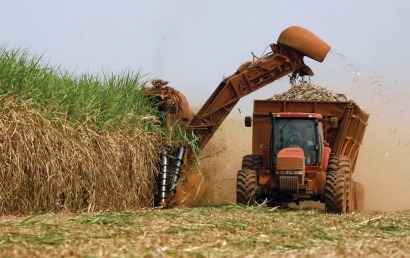
Ethanol has long been recognized as a high-quality transportation fuel, either in low or high-level gasoline blends (and is therefore not subject to a range of barriers faced by other alternatives). The paramount importance of sugarcane supply towards the sustained development of ethanol fuel industry in Brazil is well known. Looking in retrospective, it is still quite astonishing to discover how Brazil managed to take its competitive advantage as the world’s top producer of sugarcane towards an added value for one of its potential products (i.e. ethanol) to overcome the energetic world crisis in 1975. The government-created initiative, the National Ethanol Production Program (also known as Proalcool), boosted this industry’s development by subsidizing sugarcane farming as well as setting up the infrastructure to smooth the transition towards petrol replacement by ethanol. Mills would process sugarcane into ethanol, to be sold via gas stations in vehicles designed to work solely with it by carmakers.
Everything seemed to be working as expected: by the mid-1980s, most of the cars in Brazil were working only with alcohol. However, as seen by the end of that decade, the demand for sugar production based on international sugar prices rising caused an impact on the ethanol fuel industry. This was alleviated by a rise in oil prices and the innovation of flex-fuel vehicles. Flex-fuel technology could be called a “small miracle” since it allows the vehicle to work with gas, ethanol or a mixture of both by using sensors that adjust the engine combustion. And Brazil is one of the countries that have seized this technology the most, which helps to extend fossil fuel resources by delivering several ethanol-petrol mixtures to the market (from E10 to E100). Nowadays, most of the cars have this technology implemented, but not all the countries offer ethanol-petrol products in their gas stations. Many pro-biofuels authors in the past have praised the Brazilian model as a potential benchmark for further ethanol industry development. (Burnett, 2007)
However, cane harvesting sometimes behaves in a cyclical fashion, and that is reflected in the current situation for the South American giant. Since 2010, Brazil had become a net importer of ethanol. There are several factors that have intervened in creating this situation, aside from a reduced sugarcane supply. As mentioned by Czarnikow (as cited by D’Altorio, 2011), “the Brazilian real’s rise against the dollar and a lack of local investment into sugar fields” has undermined the competitiveness of domestic ethanol production due to the rise in sugar prices as a consequence. Currently, the Brazilian fuel giants (Cosan and Petrobras) are looking to increase their ethanol production, but are still affected by the factors mentioned above. That is why United States corn-based ethanol exports have increased to the South American country. It is expected by market analysts that the United States will overcome Brazil as the world’s largest ethanol exporter, since also European Union countries are relying on U.S. ethanol due to shortages in Brazil. (Bevill, 2011)
The impact of high international sugar prices is not affecting just the Brazilian ethanol industry. In other countries, such as Mexico, where a Bioenergy Law was approved by the Congress to promote further development of domestic ethanol industry, it seems hardly possible to achieve the expected objective to implement 5.7% of ethanol-petrol blends in the three largest cities of the country from national sugarcane ethanol production, since it is less profitable than making sugar. This country has nearly 750,000 ha of sugarcane cultivated. (Lazcano, 2006).
Nevertheless, the United States would still need to import ethanol from Brazil in order to fulfil current domestic low-carbon standards. California’s Low Carbon Fuel Standard, as mentioned by Rascoe (2011), assigns a lower carbon value to sugarcane ethanol than to corn ethanol. And since Brazilian ethanol has been marked as an advanced biofuel by the EPA based on the 61% reduction in the whole life cycle greenhouse gas emissions, it would be quite important to meet the federal targets of renewable low-carbon energy consumption in the case that cellulosic ethanol domestic production is too low to help meet them. These two situations linked could lead to a decline in world production of biofuels if the U.S. market becomes saturated. (Galal, 2011) Another worrying card, as pointed by Soares Pinto (cited by Bevill, 2011) is the fact that the European Union reclassified E90 as fuel rather than a chemical, which could be translated into higher import duties for the United States. However, if the trend for next year is still high for European grain prices, U.S. ethanol could still be profitable to be exported to Europe.
In any case, improving current technologies regarding lignocellulosic ethanol development would be quite helpful to achieve the desired milestones to make sure biofuels influence both the national and global renewable energy consumption goals. Maybe this could be the boost lignocellulosic ethanol research needs in order to take this technology from pilot plant and laboratory level to mass-production, if we want to translate crisis into further opportunities. Also it would be helpful to identify potential land for increased sugarcane production or other energy crops that can help to increase the global biofuels output. However, the problem would be to make sure this new farmlands are not shifted from ethanol to sugar production based on higher expected profitability. Or to prefer the use of starch-producing crops to avoid this sweetener vs. fuel dilemma.
References
Bevill, K., 2011. By Train, By Truck, or By Boat. Ethanol Producer Magazine. [internet] 15 November. [Accessed 14 December 2011]
Burnett, D. La Solución Brasileña. Selecciones del Reader’s Digest. October 2007, 84-89. [Online] [Accessed 14 December 2011]
D’Altorio, T., 2011. Brazil Turns to U.S. to Meet Ethanol Demands. [Online] Investment U. [Accessed 14 December 2011]
Galal, O., 2011. Global Biofuels Output Slows on Less Brazilian Ethanol, IEA says. [Online] Bloomberg. [Accessed 14 December 2011]
Lazcano, I., 2006. Task 3: Overview of agricultural aspects. In: SENER/BID/GTZ, ed. Potenciales y Viabilidad del Uso de Bioetanol y Biodiesel para el Transporte en México. Mexico: Secretaria de Energia.

